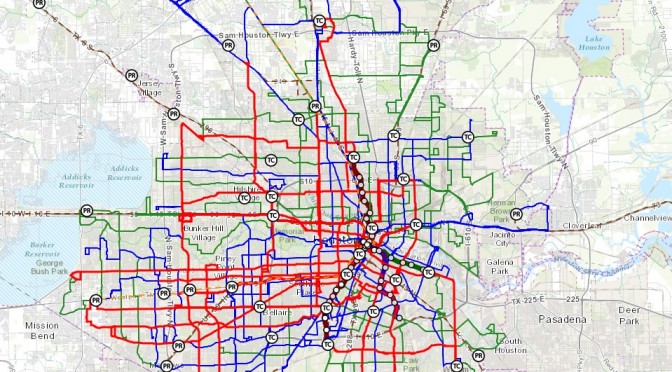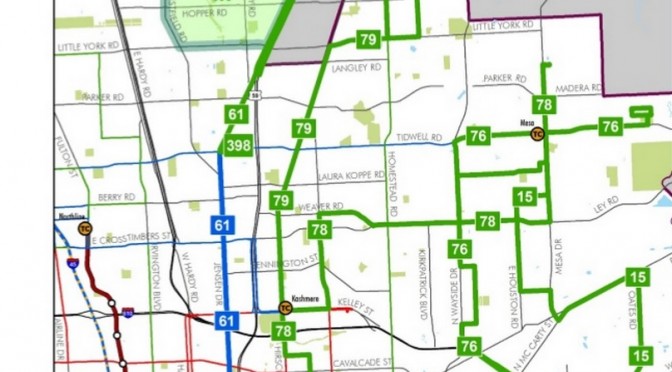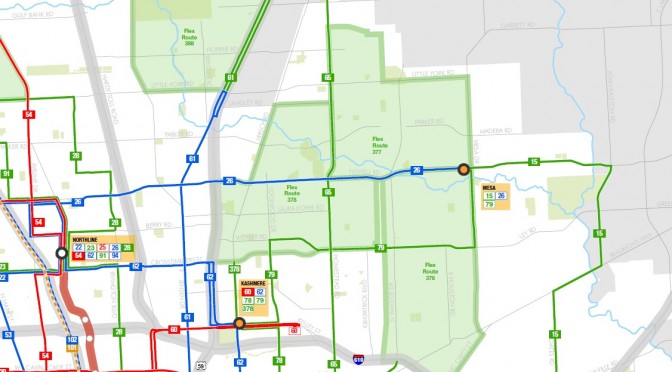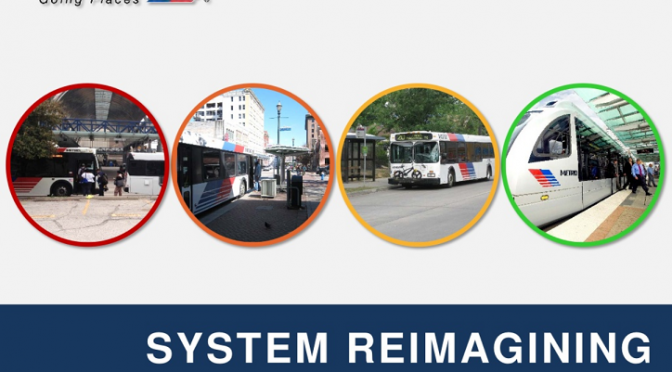
This week, METRO's long-awaited public transit overhaul now leaves the imagination, and becomes reality.
On Wednesday, the METRO Board voted unanimously to
approve the System Reimagining plan, a comprehensive re-design of all of the region's local bus routes, and released the organization's soon-to-be new system map. After months of planning, community feedback and a bevy …
Continue Reading ›› 
All summer long, Houston area residents have had the opportunity to learn about
Transit System reimagining... the complete restructuring of METRO's local bus network. If done right, the plan will connect residents to more job centers and points of interest than ever before, while providing a significant improvement in service frequency. It's an ambitious …
Continue Reading ›› 
Throughout the summer, the
Metropolitan Transit Authority (aka METRO) has been meeting with communities to provide information about the new
system reimagining plan. In most cases, the plans have been well-received, and left citizens hopeful that they will see vast improvements in service.
This was certainly the case for a meeting that I attended on July 17th …
Continue Reading ›› 
At over 2.2 million residents and over 600 square miles in land area, Houston has the unique distinction of not only being one of the largest cities in the US by population, but also one of the most spread-out cities. This reality can be quite the challenge when trying to plan for the for the …
Continue Reading ››
A Voice for the Rest of Texas



